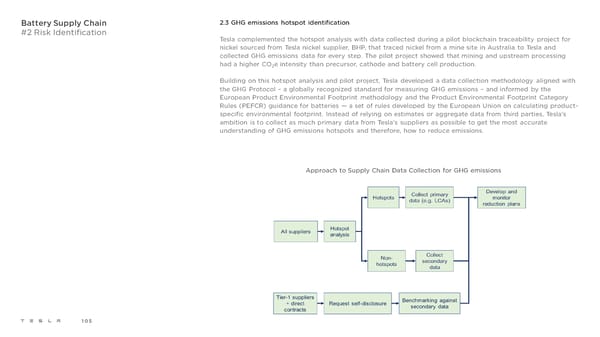Battery Supply Chain 2.3 GHG emissions hotspot identification #2 Risk Identification Tesla complemented the hotspot analysis with data collected during a pilot blockchain traceability project for nickel sourced from Tesla nickel supplier, BHP, that traced nickel from a mine site in Australia to Tesla and collected GHG emissions data for every step. The pilot project showed that mining and upstream processing had a higher CO e intensity than precursor, cathode and battery cell production. 2 Building on this hotspot analysis and pilot project, Tesla developed a data collection methodology aligned with the GHG Protocol – a globally recognized standard for measuring GHG emissions – and informed by the European Product Environmental Footprint methodology and the Product Environmental Footprint Category Rules (PEFCR) guidance for batteries — a set of rules developed by the European Union on calculating product- specific environmental footprint. Instead of relying on estimates or aggregate data from third parties, Tesla’s ambition is to collect as much primary data from Tesla’s suppliers as possible to get the most accurate understanding of GHG emissions hotspots and therefore, how to reduce emissions. Approach to Supply Chain Data Collection for GHG emissions 105
 Tesla 2021 Impact Report Page 104 Page 106
Tesla 2021 Impact Report Page 104 Page 106